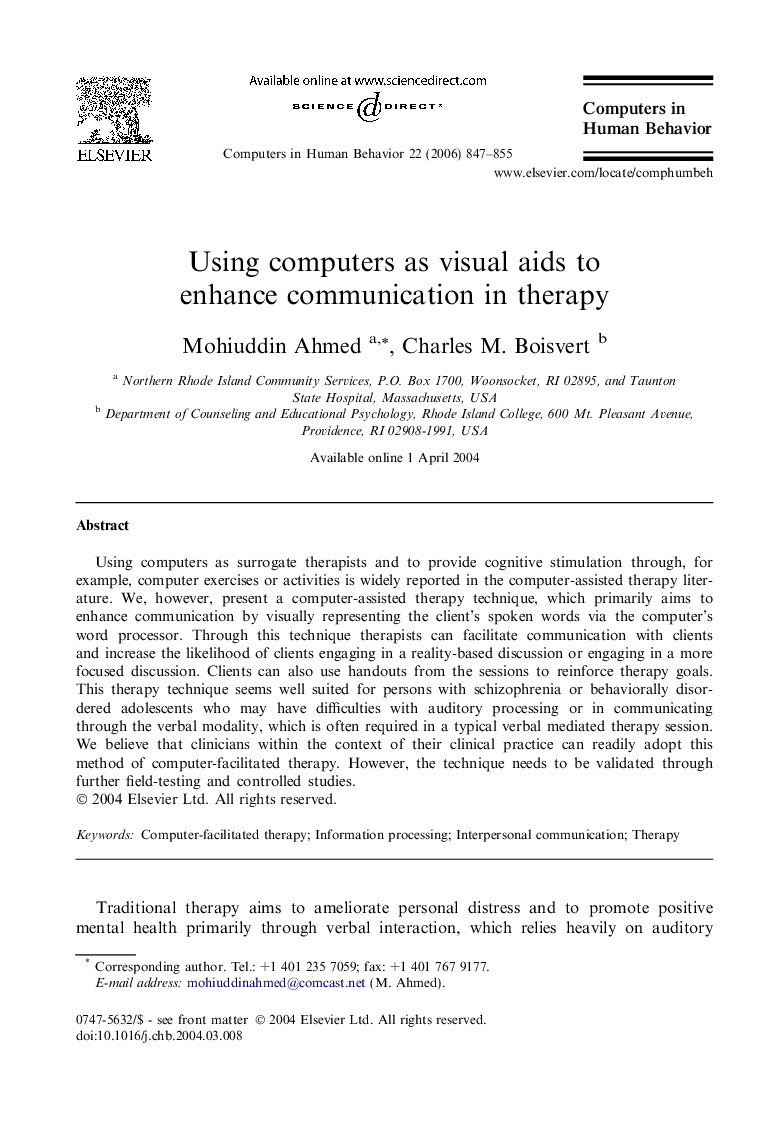| Article ID | Journal | Published Year | Pages | File Type |
|---|---|---|---|---|
| 352187 | Computers in Human Behavior | 2006 | 9 Pages |
Using computers as surrogate therapists and to provide cognitive stimulation through, for example, computer exercises or activities is widely reported in the computer-assisted therapy literature. We, however, present a computer-assisted therapy technique, which primarily aims to enhance communication by visually representing the client’s spoken words via the computer’s word processor. Through this technique therapists can facilitate communication with clients and increase the likelihood of clients engaging in a reality-based discussion or engaging in a more focused discussion. Clients can also use handouts from the sessions to reinforce therapy goals. This therapy technique seems well suited for persons with schizophrenia or behaviorally disordered adolescents who may have difficulties with auditory processing or in communicating through the verbal modality, which is often required in a typical verbal mediated therapy session. We believe that clinicians within the context of their clinical practice can readily adopt this method of computer-facilitated therapy. However, the technique needs to be validated through further field-testing and controlled studies.
